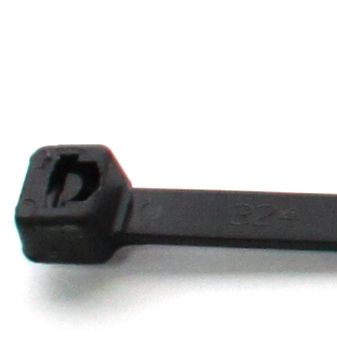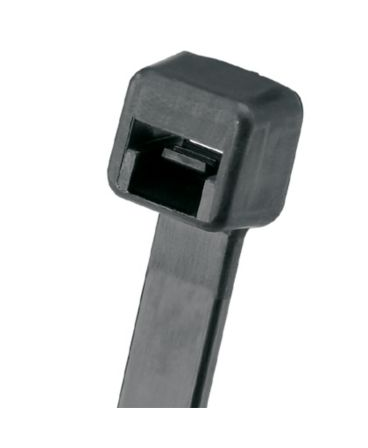Cable ties might seem like mundane objects, yet they hold a secret life in the art world. In art installations, they serve as an invisible scaffold, providing crucial support that often goes unnoticed. This blog delves into the fascinating use of cable ties in art installations, revealing how these simple tools aid creatives in bringing their visions to life.
Unbeknownst to many, cable ties are a staple in the toolkit of modern artists. Their versatility and strength make them ideal for a variety of artistic applications. From sculptural works to sprawling installations, cable ties quietly yet effectively hold the art world together.
The Unseen Heroes of Art Installations
In the realm of art installations, cable ties do more than just bind objects. They offer flexibility and strength, allowing artists to create complex structures. Their discreet presence ensures that the focus remains on the art, not the mechanics behind it.
Furthermore, cable ties adapt to various materials and shapes, making them indispensable in the artistic process. Whether it’s holding together wires or sculpting forms, these ties bring stability and precision to creative works. Their role, though often invisible, is pivotal in the success of many installations.
Versatility in Material and Function
Cable ties come in various materials, each serving different artistic needs. Nylon ties are common for indoor installations due to their flexibility. For outdoor pieces, UV-resistant and weatherproof ties are essential. These variations provide artists with a range of options to best suit their projects.
Additionally, the range of sizes and colors available in cable ties broadens their artistic application. They can blend seamlessly into an installation or stand out as a visual element. This versatility makes cable ties a go-to choice for artists seeking both function and aesthetic value.
Sustainability and Artistic Expression
Recently, there's a growing trend in using sustainable materials in art. Cable ties, especially those made from recycled plastics, align with this movement. Artists use them to make a statement about recycling and sustainability.
Moreover, the durability of cable ties means artworks can withstand time and elements. This longevity is crucial for installations that are meant to leave a lasting impression. Thus, cable ties not only support art structurally but also conceptually, echoing the themes of durability and sustainability.
Creative Innovations with Cable Ties
Breaking Boundaries in Artistic Design
Artists are revolutionizing design by incorporating cable ties in unexpected ways. These ties, known for their utility, are now key elements in creating intricate, large-scale art installations. Artists twist, weave, and layer them, crafting mesmerizing patterns and textures.
Crafting Unique Textures and Patterns
Cable ties enable artists to sculpt unique textures and patterns. By varying their lengths, colors, and arrangement, artists create visual complexity. These ties become part of the artwork's narrative, adding depth and dimensionality to installations.
The Evolution of Cable Ties in Art
From Utility to Artistry
Cable ties have journeyed from backstage utility to artistry prominence. What began as a tool for binding and securing has transformed into a medium for creative expression. This transition highlights their adaptability and the evolving nature of art materials.
Historical Highlights of Cable Ties in Art
This journey through history would spotlight key art installations where cable ties played a transformative role. It would underscore how these humble ties have been integral in various art movements, adding structural integrity and aesthetic value to iconic pieces.
The Technical Side of Artistic Cable Ties
Choosing the Right Cable Tie for Art Projects
Selecting the appropriate cable tie is crucial for any art project. Factors like color, tensile strength, and material type influence their application in art. This section advises artists on making the best choice for their specific project needs.
Installation Tips and Tricks
Here, artists can find practical tips for using cable ties in their installations. This includes advice on creating stable structures, achieving visual harmony, and ensuring the durability of their artwork.
Practical Tips and Tricks for Using Cable Ties in Art Installations
Selecting the Right Cable Tie
- Match Cable Ties to Your Material: Choose ties that complement your installation materials. For delicate fabrics, use lightweight nylon ties. For heavier elements, opt for stronger, perhaps wider, cable ties.
- Color Coordination: Use colored cable ties to either blend in with your art piece or add a contrasting visual element. Remember, cable ties can be both functional and decorative.
Creating Stable Structures
- Layering for Strength: When building large structures, layer cable ties for added strength. This method distributes weight evenly and prevents breakage.
- Balancing Tension: Ensure cable ties are tight enough to hold components securely, but not so tight that they warp or damage your materials.
Achieving Visual Harmony
- Concealment: If you want cable ties to be invisible, select colors that blend with your installation or hide them behind other elements.
- Pattern Creation: Use cable ties to create patterns or textures. Their uniform size and shape can produce visually appealing geometric patterns.
Ensuring Durability
- UV Resistant Ties for Outdoor Art: If your installation is outdoors, use UV-resistant cable ties to prevent degradation from sunlight.
- Weather Consideration: In harsh weather conditions, consider using cable ties made of more durable materials like stainless steel or UV-stabilized nylon.
Installation and Adjustment
- Pre-Planning Layouts: Before securing anything, lay out your design. This approach allows you to make adjustments without wasting materials.
- Cutting Excess: Trim the tails of cable ties for a cleaner look. Be careful to cut close to the head to avoid sharp edges.
Creative Applications
- Textural Elements: Layer cable ties to create unique textures. Their overlapping can create depth and shadow effects.
- Dynamic Movement: Arrange cable ties in a way that they move or sway slightly, adding a dynamic element to your installation.
Safety and Sustainability
- Safe Handling: Always handle cable ties with care to avoid injury from sharp edges after cutting.
- Eco-friendly Options: Where possible, use cable ties made from recycled materials to reduce your environmental footprint.
Product Reviews and Comparisons
PRODUCT 1: 14.6" 50lb UV Black Cold Weather Frosty Cable Ties

Review: These UV cable ties are designed for resilience in extreme conditions. With a length of 14.6 inches and a tensile strength of 50lbs, they are suitable for more substantial bundling needs.
The extended UV and cold weather resistance make them ideal for outdoor applications, particularly in colder climates where temperatures can drop to -20°C (-4°F).
The price point of $7.95 for 100 ties is economical, considering their specialized features.
Pros:
- Excellent for cold weather applications.
- UV resistance for prolonged outdoor use.
- Strong tensile strength for heavier tasks.
Cons:
- Longer length may not be necessary for smaller applications.
- Limited to black color, which may not suit all aesthetic needs.
PRODUCT 2: Panduit 4" 18lb Black UV Weather Resistant Pan-Ty® Cable Ties
Review: The Panduit Pan-Ty® cable ties are a more compact option, measuring 4 inches in length with an 18lb tensile strength.
They are made from weather-resistant nylon 6.6, making them durable in various environmental conditions. Their operating temperature range is impressive, spanning from -76°F (-60°C) to 185°F (85°C).
Priced at $11.95 for 100 ties, these are a bit more expensive but offer excellent resistance properties and a broad temperature range.
Pros:
- Wide temperature range suitability.
- UV and weather-resistant.
- CE and CSA certified for quality assurance.
Cons:
- Lower tensile strength compared to the first product.
- Shorter length limits their use in larger bundling tasks.
Our Verdict:
The 14.6" 50lb UV Black Cold Weather Frosty Cable Ties are more suited for heavy-duty applications, particularly in cold environments. Their length and strength make them versatile for larger tasks. On the other hand, the Panduit 4" 18lb Black UV Weather Resistant Pan-Ty® Cable Ties, while shorter and less tensile, offer a wider temperature range and are better for smaller, more delicate bundling in various weather conditions. The choice between the two would depend on the specific needs of the application, considering factors like environment, size of the items to be bundled, and required strength.
Conclusion
Cable ties, though small and unassuming, play a significant role in art installations. They offer strength, versatility, and even a statement on sustainability. Their ability to support and enhance creative visions is invaluable in the art world.
Discover more about the unique applications of cable ties in art. Visit our latest blog post to explore further how these simple tools help shape extraordinary artistic creations. Join us in celebrating the unsung heroes of the art world – cable ties.


